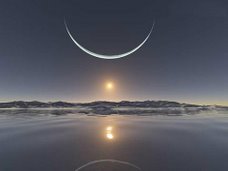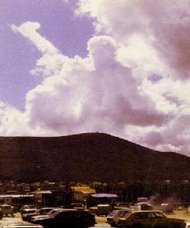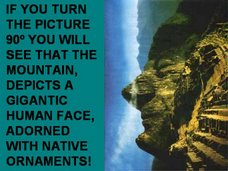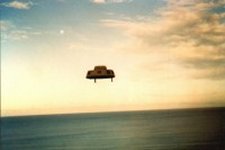 Was the earth once covered completely for a time with water, caused by a great flood? The earliest known civilization, the Sumerians (3000 B.C.) believed that such a flood occurred. The mythology of Greece also shares this Judeo-Christian story. Almost every major culture has a story about a great flood that covered the planet and how one man and his family survived it.
Was the earth once covered completely for a time with water, caused by a great flood? The earliest known civilization, the Sumerians (3000 B.C.) believed that such a flood occurred. The mythology of Greece also shares this Judeo-Christian story. Almost every major culture has a story about a great flood that covered the planet and how one man and his family survived it.A startling number of creation lores have fixed to them the "flood" myth. In the mythology of most rudimentary cultures there can be discovered a flood epic, with the deluge being of such mammoth magnitude that it is surmised to have blanketed Earth completely. Such was the destructive force of this flood that few land animals and plants endured it.
In Wes
 tern civilization the most famous version is the story of Noah and the Ark as declared in Genesis. Although it may be the best known, the account of Noah's adventure is neither the only such legend nor the oldest such legend. Legends of a flood can be found in the folklore of such diverse locations as the Middle East, India, China, Australia, Southern Asia, the islands of the Pacific, Europe, Africa, and the Americas. But the flood legend on which the story of Noah is based had its origins among the peoples of ancient Mesopotamia; in the epic “Gilgamesh”. (It was during the Sumerian era that a great flood overwhelmed Mesopotamia. So great was this flood that stories about it worked their way into several ancient cultures. The Sumerian counterpart of Noah was Ziusudra, and from him was developed the Babylonian figure Utnapishtim, whose story of the flood was related in the “Epic of Gilgamesh”.)
tern civilization the most famous version is the story of Noah and the Ark as declared in Genesis. Although it may be the best known, the account of Noah's adventure is neither the only such legend nor the oldest such legend. Legends of a flood can be found in the folklore of such diverse locations as the Middle East, India, China, Australia, Southern Asia, the islands of the Pacific, Europe, Africa, and the Americas. But the flood legend on which the story of Noah is based had its origins among the peoples of ancient Mesopotamia; in the epic “Gilgamesh”. (It was during the Sumerian era that a great flood overwhelmed Mesopotamia. So great was this flood that stories about it worked their way into several ancient cultures. The Sumerian counterpart of Noah was Ziusudra, and from him was developed the Babylonian figure Utnapishtim, whose story of the flood was related in the “Epic of Gilgamesh”.)The Greek flood legend has Zeus deciding to destroy the Earth, but he allows the good King Deucalion and his family to be saved by taking refuge in an ark well stocked with provisions. Texts from the 6th century BC in India tell the story of Manu, (meaning "man") who is warned by a fish about a coming flood. In the legend Manu builds a boat and saves himself.
In China the flood myth had a different twist than the legends told in the West. The flooding of the land year after year was seen as an obstacle to successful agriculture. The floods were made much less damaging through the efforts of a hero named Yu the Great, who dredged the land to provide outlets to the sea for the water.
At this interval in history, there was one terra firma mass combining present day Europe, Africa, America, and all other lands bordering them. There were lakes and rivers that dotted the vista but most of the water was well underneath the earth's surface. According to both legends and researchers, the deluge started with torrential downpours followed by the splitting of the earth. Stress on the earth's crust caused it to fissure northward and southward. The earth was polarized open at a rate of 3 miles per second encircling the globe in approximately 2 hours. This split created continental plates that divided east from west.
The succinct rock beneath the continental plates was forced upward creating the mid-Atlantic ridge currently located in the center of the Atlantic Ocean. As the ridge was pushed upward, the continental plates were pushed apart at rates up to 45 miles per hour. The two continental plates eventually collided with other plates causing the land to move upward or downward. The upward locomotion created the mountainous regions of the world. The downward activity resulted in deep trenches in the ocean floors. This explains why major mountain regions and ocean trenches are parallel to one another.
Waters that were initially released from the earth ruptured forth into the atmosphere at supersonic speeds. As the water went higher and higher into the atmosphere, much of it became solid ice. Rain, hail, and snow fell on the earth, according to most accounts, for forty days and forty nights. All life forms that found themselves on top of mountains were instantly frozen in time. This explains the fish and animal fossil remains in nearly every mountain region of the world, and how some are so well preserved. The so called "ICE AGE" was in fact just a matter of days.
Sediment from displaced earth rapidly settled trapping animal and plant life beneath it. The once thriving cities disappeared under tons of rock and then mud. The decomposed remains of plants, trees, and animals beneath this sediment currently provide the world's oil supply.
After one hundred and fifty days, the water receded and dry land appeared. Noah and his family came out of the ark 370 days after the torrent began. The Ark rested on Mount Ararat, in Northern Turkey - where some believe its remnants exist to this day.
Jewish historians as well as many ancient civilizations throughout the world spoke of the great flood. Scientists have proven conclusively that there was indeed a flood that covered the entire earth and this occurrence is carved in stone or clay in nearly every primordial civilization. Thousands of individuals have reportedly seen the Ark. In recent history, there were two major sightings of the ark. In 1883, the Turkish military found the ark while investigating damage caused from a massive earthquake. They not only found and entered the Ark, but also returned with pieces of wood from the structure. Because of the acceptance of Darwin's theory of Evolution, the find was ignored by most in the western world. However, in 1917, th
 e Czar of Russia sent an expedition to find and document the location of the ark. It was found and photographed. Unfortunately, the Czar's government was toppled by the communists and documentation was either destroyed or hidden in Kremlin safes. The Czar's mother spoke of the expedition years later, and had a cross made from the wood of the ark. Since this time, numerous glimpses have been reported. Racial fighting and terrorist camps in the area have restricted contemporary attempts to ascertain the Ark. This territory is currently under the control of Kurdish terrorists.
e Czar of Russia sent an expedition to find and document the location of the ark. It was found and photographed. Unfortunately, the Czar's government was toppled by the communists and documentation was either destroyed or hidden in Kremlin safes. The Czar's mother spoke of the expedition years later, and had a cross made from the wood of the ark. Since this time, numerous glimpses have been reported. Racial fighting and terrorist camps in the area have restricted contemporary attempts to ascertain the Ark. This territory is currently under the control of Kurdish terrorists.The US military knows the location and has satellite photographs of the Ark to prove it. Because of security
 considerations, they will not release these photographs. American Air force navigators used the Ark as a landmark while on bombing raids during World War II.
considerations, they will not release these photographs. American Air force navigators used the Ark as a landmark while on bombing raids during World War II.Legend has it that God promised Noah He would never destroy the earth in a flood again. He made a covenant with man and placed the rainbow in the clouds as a sign. Each time the rainbow is observed, it is a reminder of this covenant God made with man.















